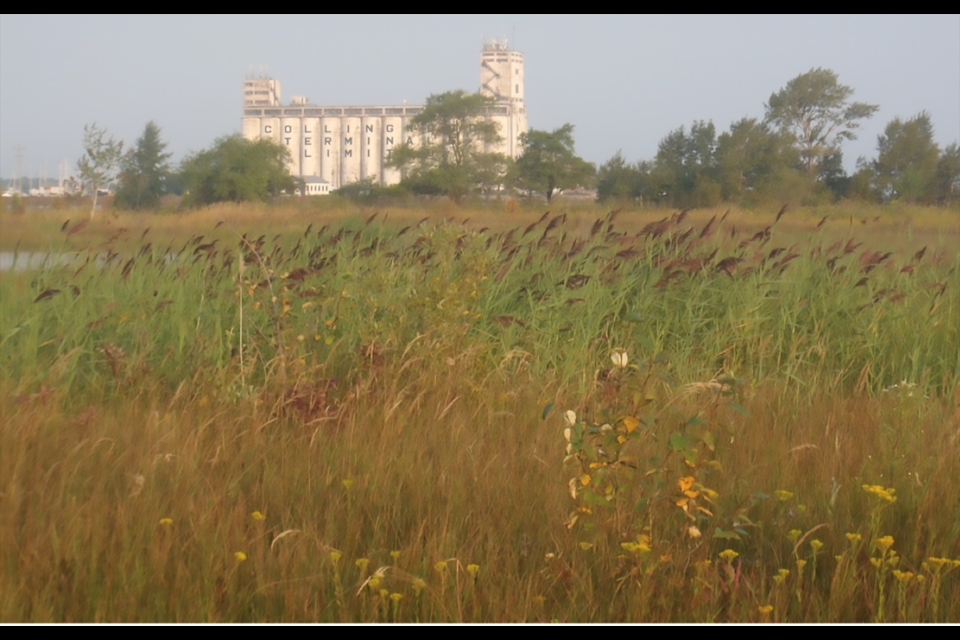The County of Simcoe is committing $200,000 to help battle invasive species.
During 2019 budget deliberations, county council approved the funds for two new summer yard waste collection dates. While any yard waste will be accepted, these dates have been specifically chosen to include invasive Phragmites.
“We’ve planned (the pick ups) for the time of year where the seeds should not be viable,” says Rob McCullough, director of solid waste management with the county, adding that the first summer yard waste pick up will be the second week of July. “The seeds don’t become viable until the end of August and into September.”
“We’re setting up our system so we can reduce the potential that Phragmites can spread.”
According to the Ministry of Natural Resources (MNR), the invasive subspecies (australis) of Phragmites is similar to the native species (americanus), and it is imperative that a stand be identified before implementing a management plan.
While it can be difficult to tell native and invasive Phragmites apart, some identifying characteristics that may help are height, density, stem colour, leaf colour and seedhead density. For more details on the differences between native and invasive Phragmites, see the factbox at the bottom of this story.
“The MNR is responsible for containing invasive species and they, rightly, are concerned about Phragmites being mishandled by residents,” said McCullough. “Composting in your own backyard is specifically not recommended for Phragmites because (residents) don’t do the same kind of process for composting that we do at our sites.”
“There is significant risk that that could spread the invasive species,” he said.
McCullough says that while the county hasn’t received many requests for the additional summer dates directly from the public, they have been presented with complaints from county councillors.
“There have been requests that have come in, specifically from councillors from Bradford West Gwillimbury. When the politicians are out knocking on doors, they can hear something different than what people would self report to us,” he said.
“I think, through the Phragmites question, more attention is being paid to that.”
McCullough says a report was delivered at the county level in 2016 when the waste collection contract with Miller Waste Systems was being renegotiated. At that time, the county looked at different scenarios for summer yard waste collection, but ultimately opted to go without.
Since then, with the spread of invasive Phragmites county-wide, things have changed.
The County of Simcoe is granted a licence to compost through the Ministry of Environment (MOE), which includes strict requirements about how material is composted locally. The process includes monitoring for temperature, moisture and requiring weekly turning of the material.
“We have talked at length with the MOE and they believe that the composting that we perform at our sites does a complete job of pathogen kill, which should kill all seeds and rhizomes that are in the Phragmites,” says McCullough.
Now that the dates have been approved by council, county staff are busy starting to prepare a public awareness campaign about the differences between native Phragmites and invasive Phragmites and proper harvesting practices.
Do you have difficulty remembering which days certain trash is supposed to be at the curb? The County of Simcoe offers an email notification tool for waste collection. To sign up, click here.
What are the visible differences between invasive and native Phragmites?
Invasive Phragmites
- Grows in stands that can be extremely dense with as many as 200 stems per square metre.
- Can grow so densely that it crowds out other species.
- Can reach heights of up to 5 metres (15 feet).
- Has stems that are tan or beige in colour with blue-green leaves and large, dense seedheads.
Native Phragmites
- Grows in stands that are usually not as dense as the invasive plant;
- Well-established stands are frequently mixed with other plants; and
- Usually has more reddish-brown stems, yellow-green leaves and smaller, sparser seedheads.
Source: Ontario’s Invasive Species Awareness Program
